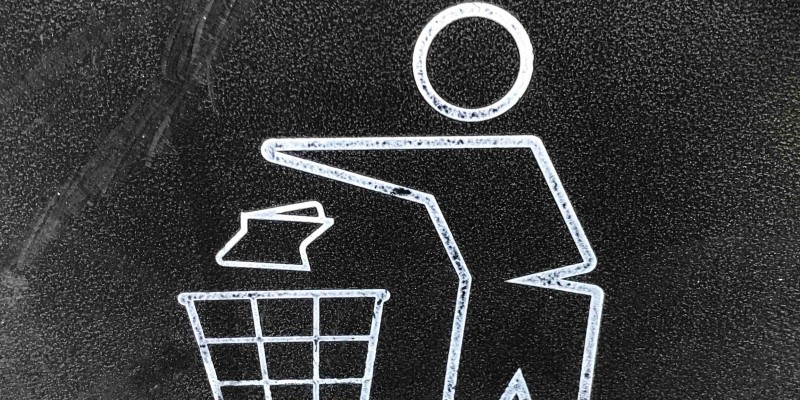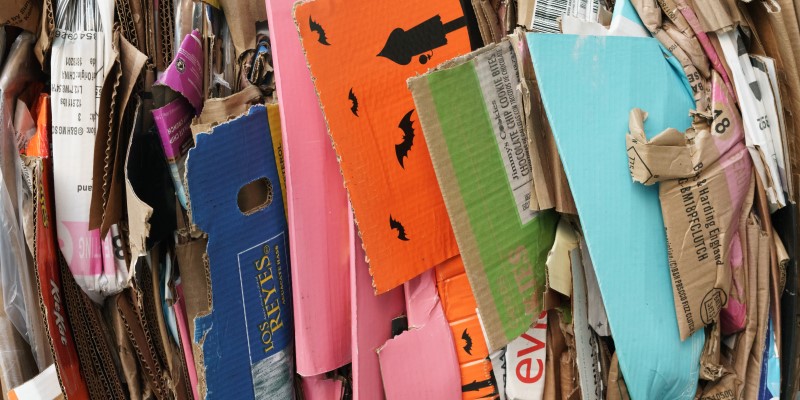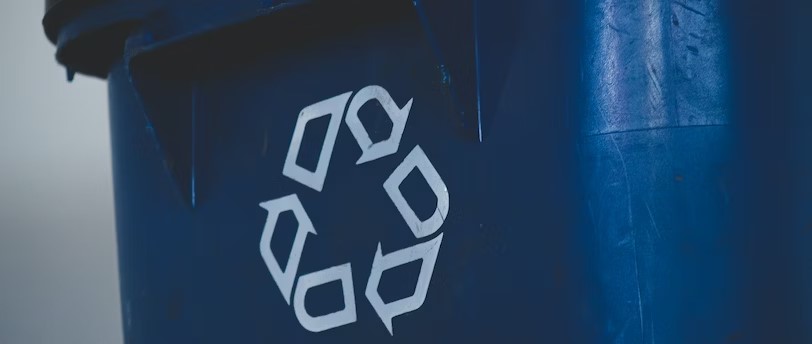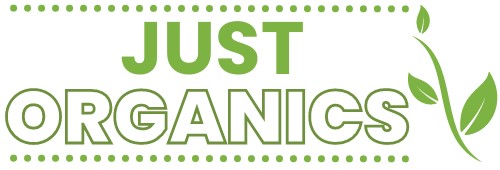In a world filled with plastic waste, Styrofoam stands out as a beacon of environmental concern. This insidious substance has infiltrated our lives and landfills, refusing to break down or biodegrade. It lingers for centuries, suffocating our planet and poisoning our oceans like a toxic cloud that never dissipates. But fear not, for a glimmer of hope may be on the horizon. The question you want an answer to: is Styrofoam recyclable?
Key Takeaways
- Styrofoam can be recycled using specialized machines.
- Recycling Styrofoam reduces the demand for virgin materials and saves energy.
- Styrofoam takes hundreds of years to decompose in landfills.
- Burning Styrofoam releases toxic fumes and contributes to air pollution.
Table of Contents

What is Styrofoam?
So let’s talk about Styrofoam and polystyrene. You might think they’re the same thing, but there’s a difference. Styrofoam is a brand name for expanded polystyrene foam, commonly used in packaging materials and disposable food containers. Here’s the kicker: most people assume you can’t recycle polystyrene, but that’s not entirely true! While it may be more complex than tossing it in your regular recycling bin, some facilities can recycle polystyrene into new products like picture frames or insulation. Finding those recycling options and doing our part to reduce waste takes a little extra effort.
Styrofoam and polystyrene: What’s the difference?
Did you know that understanding the difference between Styrofoam and polystyrene could significantly impact our environment? Styrofoam, often mistakenly used interchangeably with the term polystyrene, is a brand name for a type of expanded polystyrene foam made by the Dow Chemical Company. It is commonly used in packaging materials, disposable coffee cups and plates, and insulation. On the other hand, polystyrene refers to the plastic polymer from which Styrofoam is made.
Knowing this difference can help us make more informed choices about handling these materials. Here are four essential points to consider:
- Styrofoam takes centuries to break down in landfills, contributing to pollution and harming wildlife.
- Polystyrene manufacturing consumes large amounts of fossil fuels and energy.
- Polystyrene recycling programs are limited due to their lightweight nature and lack market demand.
- Proper disposal of Styrofoam and polystyrene involves finding alternative uses or recycling options.
By being aware of these facts, we can reduce our dependence on Styrofoam and explore more sustainable alternatives. Understanding the distinction between these two materials helps us realize that minimizing our use of non-recyclable products like Styrofoam can positively impact our environment.
Now that we understand the difference between Styrofoam and polystyrene, let’s answer another crucial question: Can polystyrene be recycled?
Can polystyrene be recycled?
Imagine the positive impact you could make on our environment by discovering if we can recycle polystyrene and find ways to reduce its waste. Polystyrene foam, commonly known as Styrofoam, is a lightweight material widely used in packaging and insulation due to its excellent insulating properties. Unfortunately, recycling polystyrene can be quite challenging. However, methods for recycling Styrofoam, such as EPS recycling (Expanded Polystyrene), are available. This process involves breaking down the foam into small beads that can be melted and used to create new products.
Polystyrene foam is mainly made of air with only a small percentage of plastic. Its low density makes it difficult to transport and store for recycling facilities. Contaminants, such as food residue or dirt, further hinder recycling. Despite these challenges, efforts are being made to improve Styrofoam recyclability through initiatives like EPS recycling.
Considering polystyrene recyclability and its impact on our environment, exploring alternatives and reducing our consumption of single-use plastics like Styrofoam becomes crucial. Doing so contributes towards a more sustainable future and inspires others to follow suit. So now let’s dive deeper into another critical question: Can you recycle Styrofoam?
Can You Recycle Styrofoam?
The answer to recycling Styrofoam is more complex than we hoped. Unfortunately, Styrofoam cannot be placed in our regular recycling bins at home. However, some specialized facilities and programs accept and recycle this material, so finding out where we can drop off our Styrofoam waste locally is important. Recycling Styrofoam involves thermal densification, which melts down the foam into a liquid form that can then be moulded into new products. It’s a unique and fascinating method that helps reduce waste and protect our environment.
Does Styrofoam go in my recycling?
To properly dispose of Styrofoam, you should not put it in your recycling bin. Styrofoam is not recyclable through your regular kerbside recycling program. Here are four reasons why putting Styrofoam in your recycling bin is a big no-no:
- Contamination: Styrofoam can contaminate other recyclables like paper and cardboard, making them less valuable and harder to recycle.
- Volume: Styrofoam takes up a lot of space due to its low density, which means it fills up recycling bins quickly and reduces the efficiency of the recycling process.
- Cost: Recycling facilities often incur high costs when processing Styrofoam because it requires special equipment and additional steps compared to other materials.
- Limited Demand: The market demand for recycled Styrofoam is limited, making it difficult for recycling facilities to find buyers for this material.
So instead of tossing that Styrofoam into your recycling bin, let’s explore more sustainable options!
Where Can You Recycle Styrofoam?
Fortunately, there are several places where you can drop off your Styrofoam for proper recycling. Styrofoam recycling is an essential step in reducing waste and protecting our environment. Many local recycling centres and facilities now accept Styrofoam for recycling. These drop-off locations make it convenient for us to dispose of our Styrofoam in an eco-friendly way. By making the extra effort to find these facilities, we can ensure that our Styrofoam is recycled instead of ending up in landfills or polluting our oceans.
Following are links for recycling drop-off points. Click to find the closest to you:
Regarding Styrofoam recycling, it’s essential to know that not all materials recovery facilities accept this type of plastic foam. However, specialized recycling centres have been established specifically for this purpose. These centres use advanced technologies to break Styrofoam into its essential components and transform them into new products like picture frames or insulation material. By participating in styrofoam recycling, we contribute to the circular economy by reducing the demand for new resources and minimizing environmental harm caused by improper disposal methods. Now that we understand where to recycle our Styrofoam, let’s look at how this recycling process works!

How does Styrofoam recycling work?
Styrofoam recycling is a fascinating process that transforms plastic foam waste into new and functional products. It is essential in reducing our environmental impact and conserving valuable resources. Here are the steps in the recycling of Styrofoam:
- Collection: The first step of styrofoam recycling begins with collecting foam waste. Recycling services provide designated drop-off points where individuals can bring their used Styrofoam for proper disposal.
- Sorting: Once collected, the foam waste goes through a sorting process to separate it from other materials like paper or cardboard. This ensures that only clean and pure Styrofoam enters the recycling process.
- Shredding: The sorted Styrofoam is shredded into small pieces using specialized machines. This increases its surface area, making handling easier during subsequent steps.
- Melting and Molding: The shredded foam is then melted under controlled conditions to form a molten liquid. This liquid is then moulded into various shapes and sizes to create new products such as picture frames, crown moulding, insulation panels, and even surfboards!
By understanding this innovative foam recycling process, we can appreciate how each step contributes to saving our environment and conserving resources for future generations. Now let’s explore some exciting innovations in styrofoam recycling technology that are pushing the boundaries of sustainability even further!
Innovations in Styrofoam Recycling Technology
When disposing of Styrofoam, we often wonder if an environmentally friendly solution exists. The good news is that there have been some exciting innovations in Styrofoam recycling technology. Now, we can explore options such as breaking down Styrofoam into its original components and using them to make new products. This not only reduces waste but also helps to conserve resources. So, while Styrofoam may not be biodegradable or suitable for burning, we can still find ways to give it a second life and minimize its environmental impact.
Is there an environmentally friendly way to dispose of Styrofoam?
There are limited options for environmentally friendly disposal of Styrofoam. Still, one example of a potential solution is specialized recycling machines that can break down Styrofoam into reusable materials. These machines work by melting the Styrofoam, compacting it, and then converting it into plastic pellets that can be used to create new products. This process prevents Styrofoam from ending up in landfills, reduces the demand for virgin materials, and saves energy.
By utilizing this innovative recycling technology, we can significantly decrease the environmental impact of Styrofoam disposal. Instead of contributing to overflowing landfills, where Styrofoam takes hundreds of years to decompose, we can transform it into something valuable and sustainable. Imagine a world where every piece of discarded Styrofoam becomes a valuable resource instead of a burden on our planet.
While there may be limited options for environmentally friendly disposal of Styrofoam, specialized recycling machines offer a promising solution. By breaking down this non-biodegradable material into reusable plastic pellets, we can prevent it from clogging up landfills and take a step towards creating a more sustainable future. But what about its biodegradability? Let’s explore that further in the next section.
Is Styrofoam Biodegradable?
Imagine a world where you can dispose of Styrofoam without worrying about its environmental impact. Styrofoam, also known as foam or plastic #6, is widely used in packaging and insulation due to its lightweight and insulating properties. However, it poses a significant challenge when it comes to disposal. The unfortunate truth is that Styrofoam is not biodegradable. Once it enters our landfills or ecosystems, it will stay there for hundreds of years, contributing to pollution and harming wildlife.
But fear not! There are alternatives to simply throwing Styrofoam away. While it may not be biodegradable, it is recyclable! Many recycling facilities now accept Styrofoam for processing into new products such as picture frames or crown moulding. By recycling our Styrofoam waste, we can reduce the amount of this non-biodegradable material that ends up in landfills and minimize its negative impact on our planet.

Can You Burn Styrofoam?
No, please don’t! Did you know burning foam cups and packaging materials can release toxic fumes? It’s true. Styrofoam, often used to make these products, is harmful to the environment and poses a threat to our health when burned. Burning Styrofoam releases chemicals such as carbon monoxide, benzene, and styrene into the air. These substances can contribute to air pollution and have negative effects on our respiratory system. So, while it may be tempting to burn Styrofoam as a means of disposal, it is important to remember the potential harm it can cause.
When considering whether you can burn Styrofoam, it’s crucial to understand that this material is not recyclable. Styrofoam takes hundreds of years to break down naturally and does not biodegrade in landfills. Therefore, burning seems like a viable option for some people. However, we must remember that there are alternative ways to properly dispose of Styrofoam without harming ourselves or the environment. Many communities offer recycling programs specifically designed for styrofoam products. By participating in these programs or finding local drop-off locations, we can ensure that our waste is being handled responsibly and prevent further pollution caused by burning Styrofoam.
While it may be tempting to burn Styrofoam as a means of disposal due to its non-recyclable nature, it is essential to consider the potential harm it can cause both environmentally and health-wise. Instead of burning this harmful material, let’s explore more sustainable options such as recycling programs or finding local drop-off locations for proper disposal. Doing so will contribute towards a healthier planet for ourselves and future generations. Let’s make conscious choices that serve both us and our environment!
Conclusion
While Styrofoam is notorious for its non-biodegradable nature and harmful impact on our environment, innovative solutions are emerging that offer a glimmer of hope. These groundbreaking technologies are pushing the boundaries of what was once impossible – they are finding ways to recycle Styrofoam!
Imagine a future where every piece of Styrofoam can be transformed into something useful, eliminating the need to end up in landfills or pollute our oceans. It may seem like a distant dream, but with the passion and dedication of scientists and environmentalists worldwide, this dream could become a reality sooner than we think.
By embracing these unconventional approaches to Styrofoam recycling, we save our planet from further harm and pave the way for a more sustainable future. Let us steadfastly commit to protecting Mother Earth and support these innovations wholeheartedly. Together, we can rewrite the narrative surrounding Styrofoam and create an environmentally conscious world that future generations will be proud to inherit.
About the Author

CHARLIE
Hi, my name is Charlie. I’m the founder of Just Organics. I have a background in Environmental Health and am passionate about animal welfare. I have been using organic products for more than ten years and would like to share my love of products made from nature.
I hope you find value in our articles. If there’s anything you’d like us to write about or if you’d just like to connect with us, feel free to send us a message.
